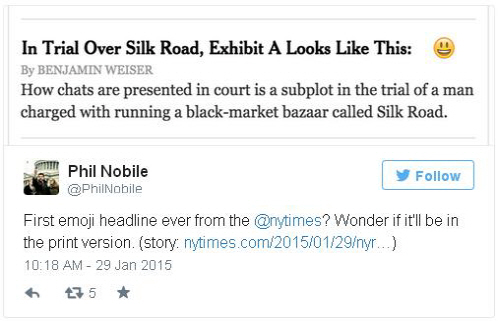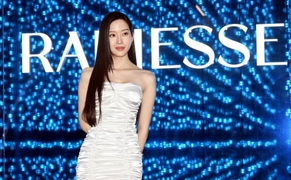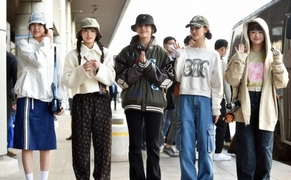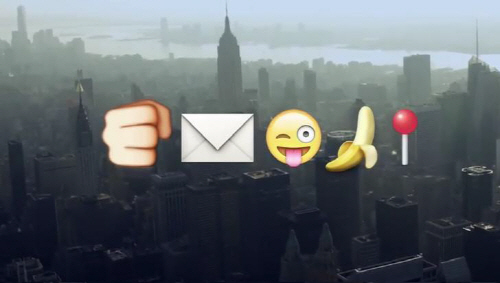 Emoji Among Us: The Documentary/ Source: YouTube Emoji Among Us: The Documentary/ Source: YouTube |
If you have a smartphone, you've probably used an emoji at least once while sending a text message. Sometimes, letters aren't just not enough to describe what you're trying to say. Emoticons or emojis help you better communicate in this era.
We send an average 96 emojis per day. All this adds up to a total of 6 billion emojis flying around the world every day on mobile messaging apps. If you don't use any emoji, people might think that you are an 'emotionless' person.
We tend to use emoji without much thinking. But sometimes, it takes time thinking what emoji to use. Anyway, here's a look at how much influence emojis have in our lives.
Emoji! Show Yourself
|
 Source: The New Yorker Source: The New Yorker |
# Emojis become a phenomenon all their own that journalism can't deny.
The New York Times, a world-class media known for its tradition and dignity, used a "historic" emoji in one of their headlines back in January. But the title with emoji disappeared immediately and netizens who were not able to find it began to get disappointed.
A lightning Twitterian who did not miss the scene, posted a screenshop of the headline, and wrote, "First emoji headline ever from the @nytimes? Wonder if it'll be in the print version."
Two months later, The New Yorker, a magazine that covers every field of art with wit and the pride of New Yorkers, humorously printed a cover with a series of emojis on it.
Barry Blitt, the artist behind the cover, showed affection towards emojis. He said, "How does anyone understand anything that's written with only letters? I feel sorry for the alphabet. I'm waiting for the first original novel to be composed solely with emoticons."
Where Did Emoji Come From?
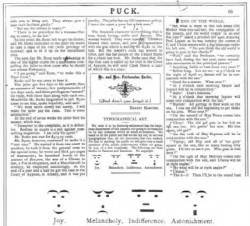 Source: Explorer |
#134 years ago…
In March 1881, the first emoticons are published in U.S. satirical magazine Puck.
The four typographical emoticons expressing joy, melancholy, indifference, and astonishment, were published by the magazine, with the stated intention that the publication's letterpress department thus intended to "lay out… all the cartoonist that ever worked."
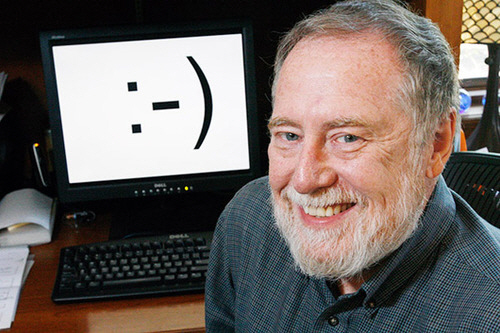 Carnegie Mellon University professor Scott Fahlman/ Source: Twitter Carnegie Mellon University professor Scott Fahlman/ Source: Twitter |
In 1982, computer scientist and Carnegie Mellon University professor Scott Fahlman proposes emoticons for happy and sad faces.
The purpose of his invention was aimed to avoid confrontations that were common on the computer-mediated communication over misunderstandings of intention.
As a result, the icons that indicated emotions began to evolve into picture characters 'emojis'.
Then in 1997, Japanese company J-Phone (now Softbank) introduced the very first emojis on its cell phone, but high prices kept it out of the hands of average citizens.
In 1999, Japanese engineer Shigetaka Kurita creates the first emoji for Japanese carrier Docomo. For inspiration, he looked at everything from Chinese characters to street signs. His emoji were quickly repurposed by young Japanese women, who found them irresistibly kawaii -cute- and began peppering their text messages with them. Their boyfriends followed suit, and before long emoji were booming.
In 2011, Apple adds an emoji keyboards to its own operating system iOS5. Two years later, Google adds native emoji support for Android phones.
How Did Emoji Conquer the World?
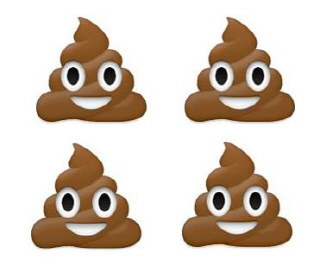 Source: Emojipedia Source: Emojipedia |
# Between cuteness and rudeness
Some emoji users love "poop" emoji, while others dislike it.
The poop emoji began in 1999 in Japan when Japan’s major telecom carriers created their first series of little graphics.
But the system was rudimentary and there were many restrictions for use. And the telecom carriers hadn’t coordinated their code points, which left Japanese users on the constant brink of a social meltdown. It was Google that brought the poop emoji to life.
In 2007, Google partnered with one of the telecom carriers, and decided to adopt emoji for Gmail. But there were stiff opposition.
 Source: Emojipedia Source: Emojipedia |
Let's listen to these software engineers who participated in the emoji project named 'Mojo', which was aimed to expand Google's presence in Japan and Asia.
Darren Lewis: Oh, it was a bigger undertaking than we thought. People were like, 'Why is it taking so long? It's just a bunch of stupid animated emoticons.' The Google marketing people didn't even want us to call it emoji because it was this weird foreign Japanese thing."
Takeshi Kishimoto: In Japanese, "E" means image and "Moji" means character.
Katsuhiko Momoi: I've looked at some studies about how people in Japan feel about emoji and one of the things that they said is that it's the easiest way to apologize - words can't express enough.
Darren: Takeshi said "poop" emoji was one of the necessary emoji that we have to have. There was conflict because there were people at headquarters who had no idea what emoji were, and thought that having an animated 'poop' in their Gmail was rude.
Despite such difficulties, the result eventually came out. Nobody thinks "poop" emoji is rude now.
Top Liked Emojis
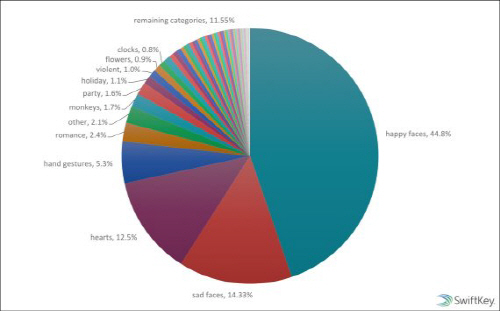 Source: SwiftKey |
# The co-existence of happiness and sadness
The most popular emoji category was Happy faces, which make up 44.8 percent of all emojii usage. Guess what the second most popular emoji category was! Sad faces.
1st place: happy faces 45% /2nd: sad faces 14% /3rd: hearts 2.5% /4th: hand gestures 5.3%
So, Everyone Loves Emoji?
# Emoji not being emoji?
Emoji has been continuously evolving. Let's go back to the history of the emoticons. Professor Scott Fahlman, computer scientist and father of Emoticon, has spoken out against the graphic rendition of his invention.
Fahlman: I think emojis are ugly! Those awful yellow circles.. I don't mind that so much, but I don't particularly like them. And maybe it's because I didn't invent them.
Shigetaka Kurita, who has widely spread emojis, seems dissatisfied as well.
Kurita: (When asked about Obama mentioning emojis on the White House lawn back in April) I suspect most Japanese people's response was, 'wow, emoji are still popular over there!?' Most Japanese people don't find Apple's emoji cute. That style has moved away from what the emoji originally were. The image in my mid was something close to text. Less e [picture] and more moji [letter].
Apple and Google's 'localized' emoji might have gone far away from the original meaning, but we can't ignore the fact that emoji has become the hub of the communication in the 21st century.
Emoji Becomes a 'Word' at Last!
 Source: Oxford Dictionary |
# Emoji shedding 'Tears of Joy'
Oxford Dictionaries has chosen the 'Face with Tears of Joy' emoji as its "Word" of the Year for 2015. This is the first time that a pictograph not a word has been chosen as the word of the year.
Reason for selection
Casper Grathwohl, President of Oxford Dictionaries: Emoji culture has become so popular that individual characters have developed their own trends and stories. You can see how traditional alphabet scripts have been struggling to meet the rapid-fire, visually focused demands of 21st Century communication. It's not surprising that a pictographic script like emoji has stepped in to fill those gaps.
Most Read
-
1
-
2
-
3
-
4
-
5
-
6
-
7








